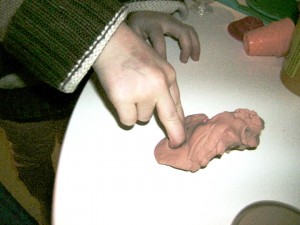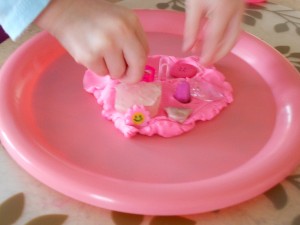Playdough is not just a toy, it’s also a tool for lots of kindergarten readiness fun and learning. Plus, it is inexpensive, easy to make, and appeals to kids of all ages. Below are some of the ways that playdough can help develop brain connections and other skills. It helps with:
 fine motor dexterity and strength; hand-eye coordination, visualizing,
fine motor dexterity and strength; hand-eye coordination, visualizing,- vocabulary and descriptive language, measuring, counting, pre-writing,
- sensory information such as shapes, texture, temperature, touch, size,
- problem-solving, planning, imagining and pretending, personal expression and more.
Play-dough can help as little ones learn numbers and letters. Learning to use scissors with play-dough is much easier than with paper. Imaginations get some exercise as kids create just about anything from a lump of playdough. Here are some activities:
 have your child roll out the letters of his/her name
have your child roll out the letters of his/her name- roll out circles, triangles, rectangles, squares
- make the shapes of the numbers 1-10 and roll out some little balls to show how many for each
- make people or animals and tell a story
- make some different shapes: flat, round, tall, short, long, curved, straight, etc
- grown-ups can form the letters of the alphabet and let kids guess, or kids can make them, too.
Playdough is great for hands and great for learning and play: Can you mix up a batch for the hands at your house?
